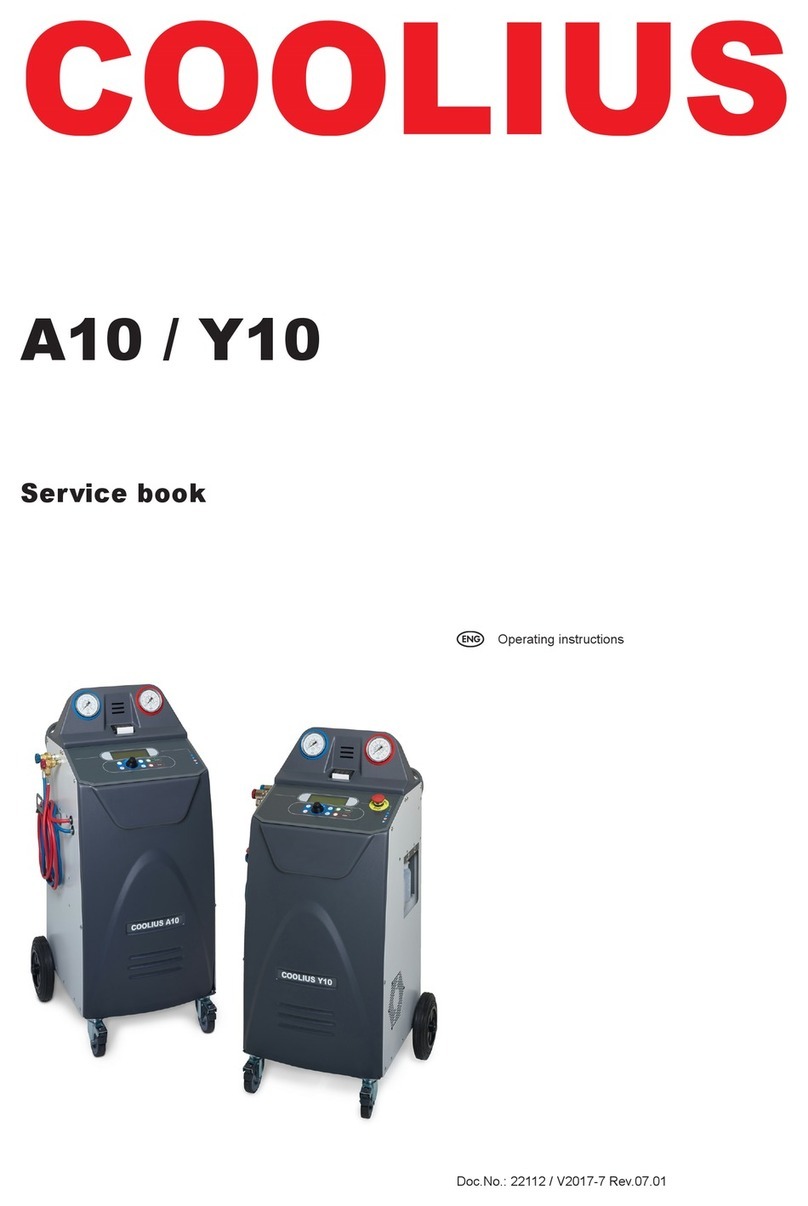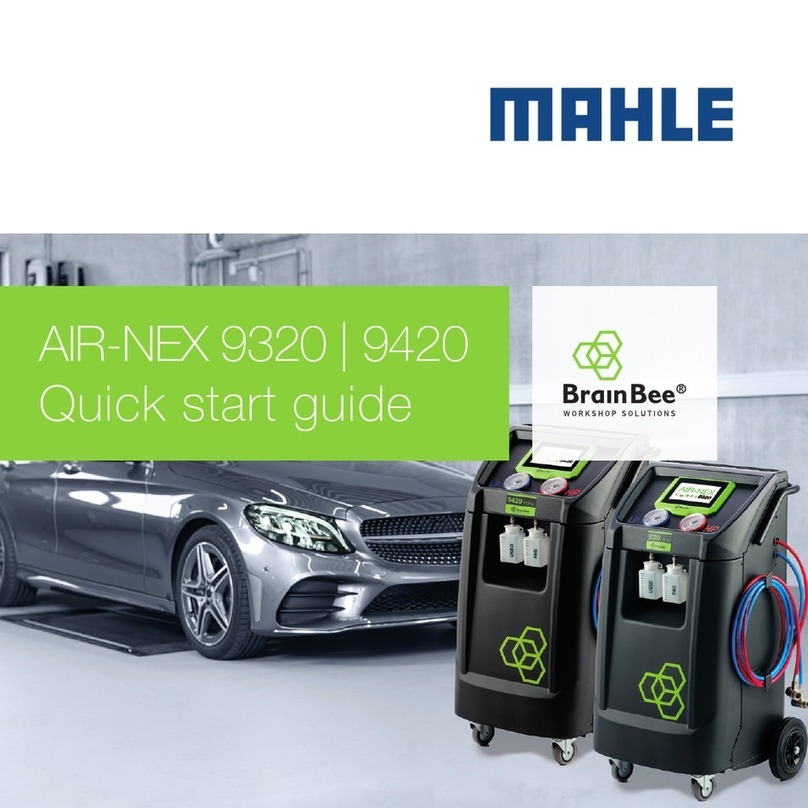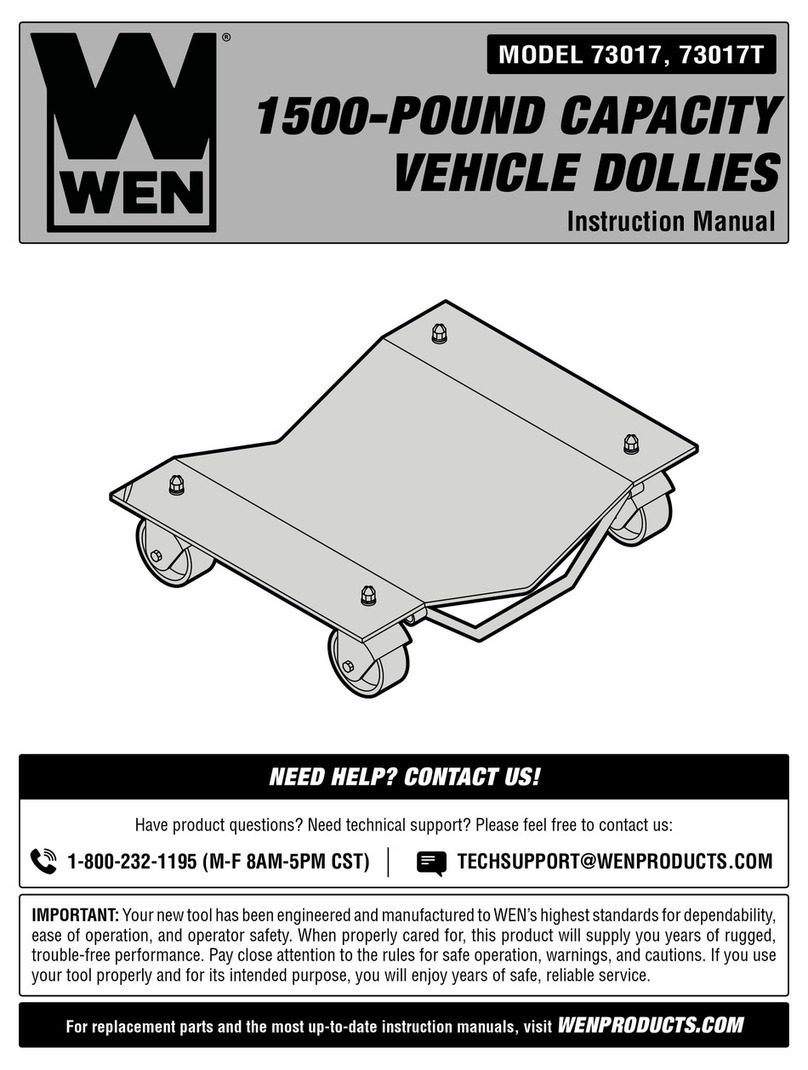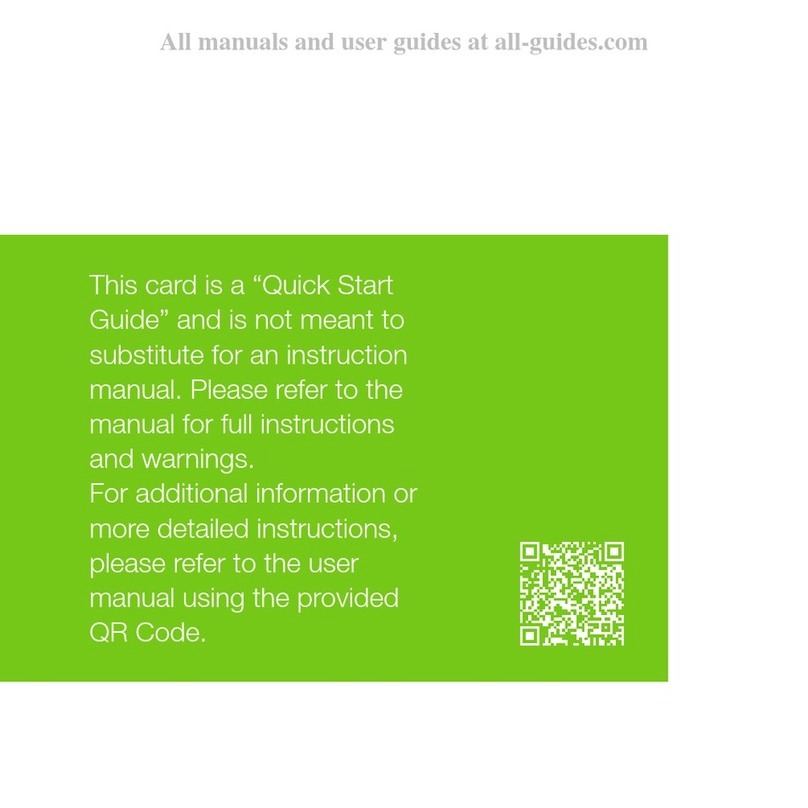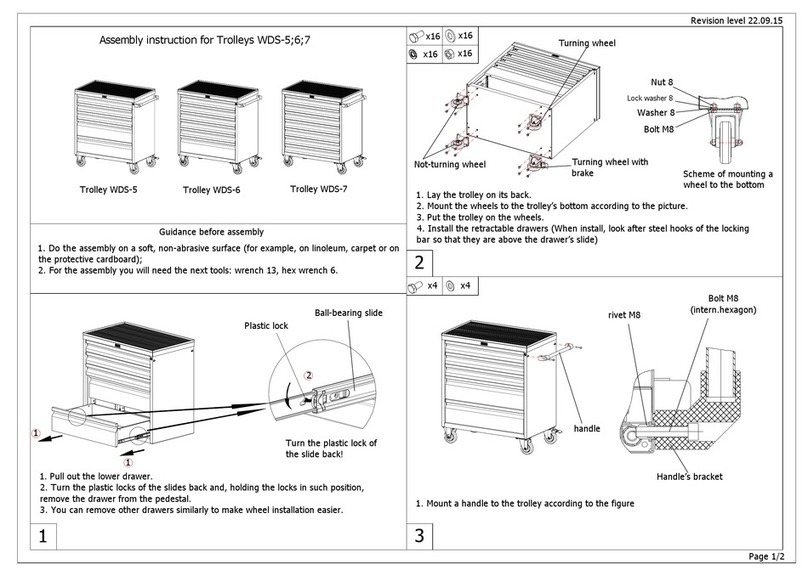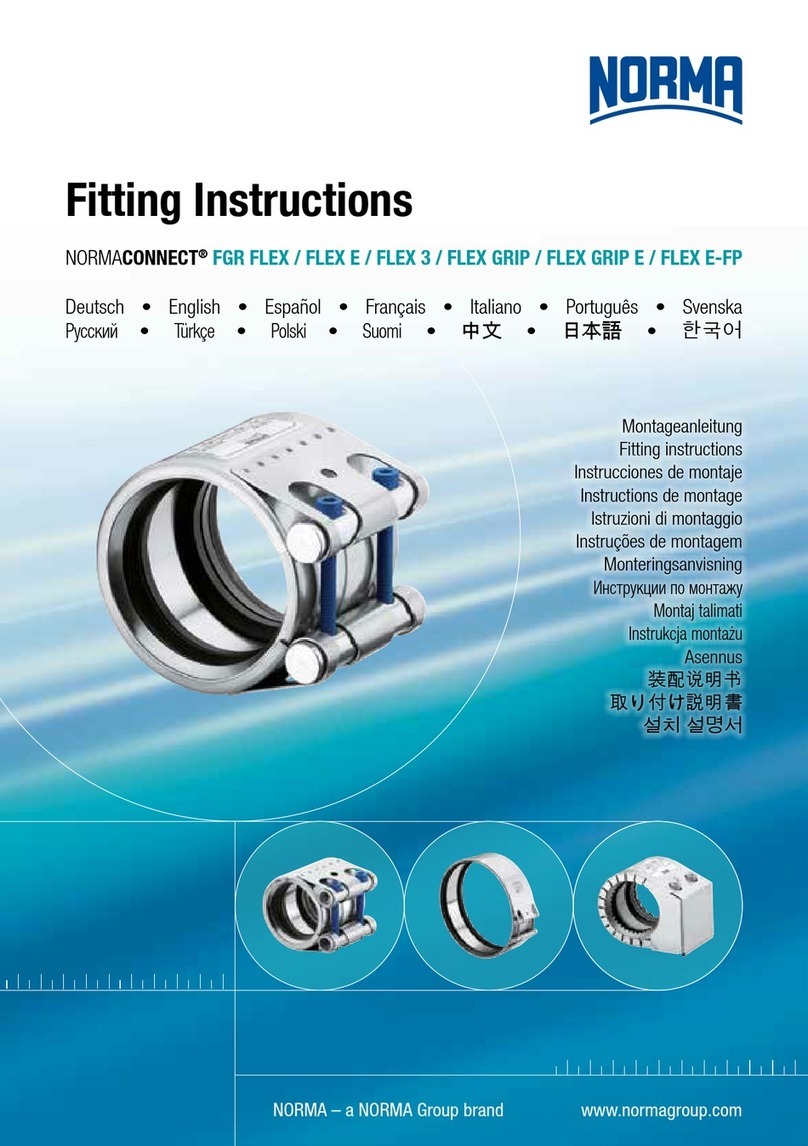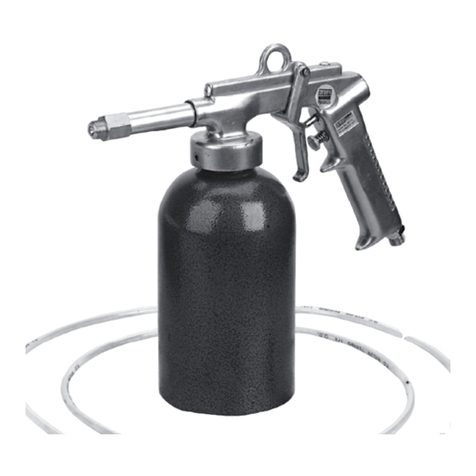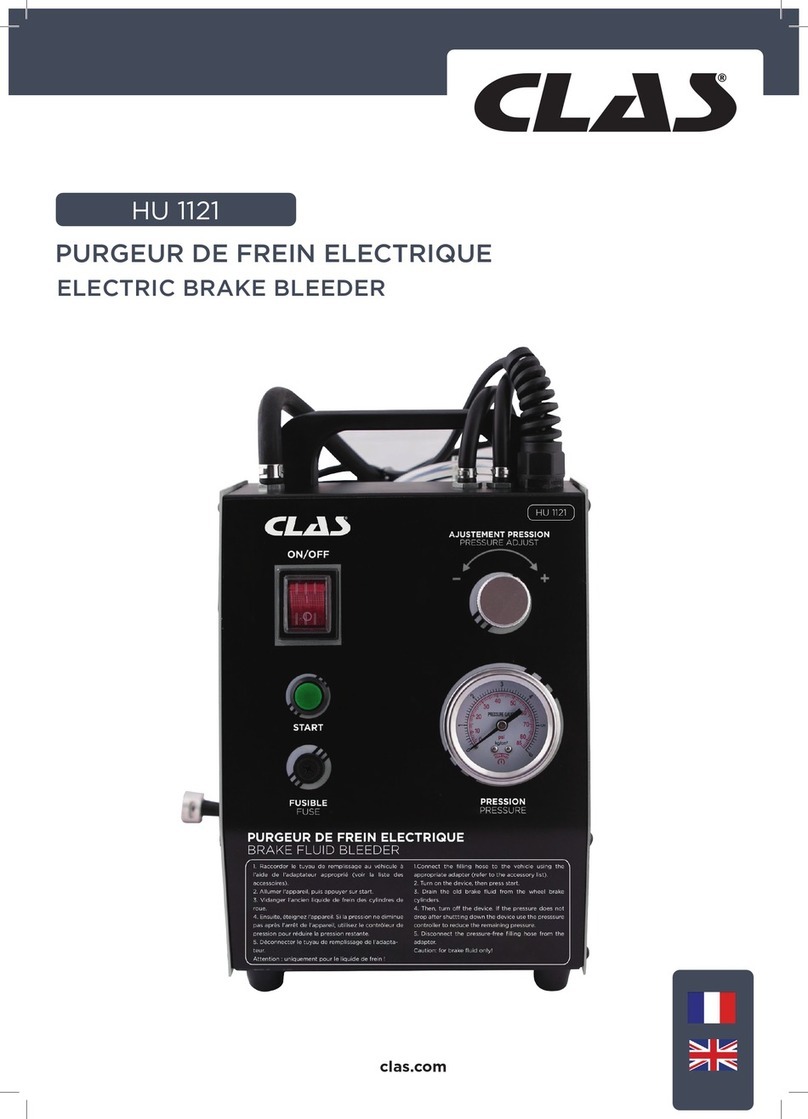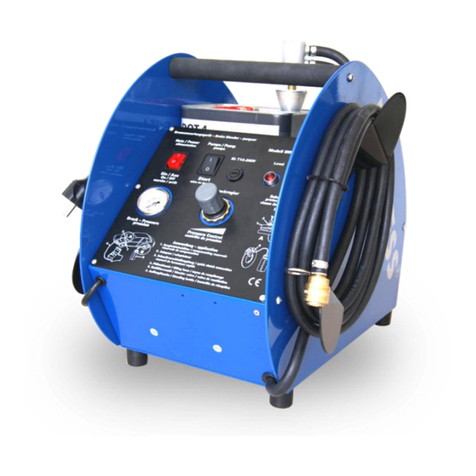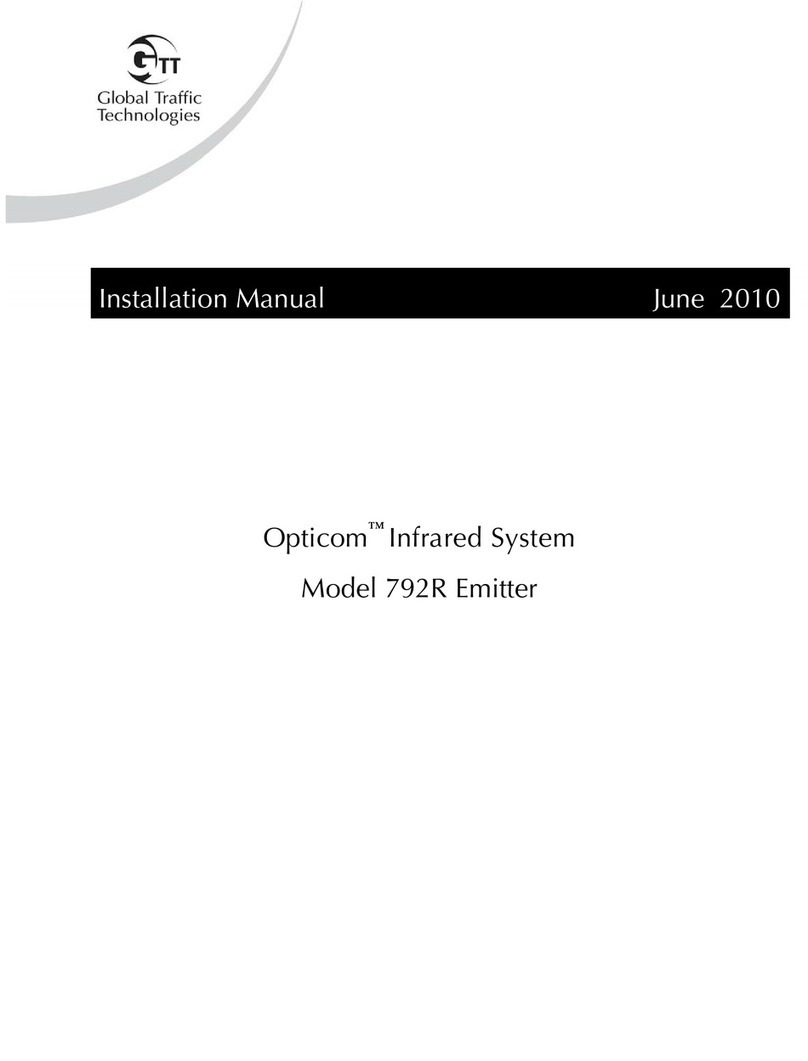TEXA Konfort 700R Series User manual

2

SUMMARY
REVIEW OF THE MANUAL.....................................................................7
INTRODUCTION......................................................................................8
1 GENERAL SAFETY REGULATIONS.................................................9
1.1 Glossary.................................................................................................9
1.2 Operator Safety Regulations..................................................................9
1.2.1 General Safety Regulations........................................................................9
1.2.2 Risk of Asphyxiation...................................................................................9
1.2.3 Risk of Impact and Crushing.......................................................................9
1.2.4 Hazards Caused by Moving Parts............................................................10
1.2.5 Risk of Burning or Scalding......................................................................10
1.2.6 Fire and Explosion Hazard.......................................................................11
1.2.7 Noise Hazard............................................................................................11
1.2.8 High Voltage Hazard.................................................................................11
1.2.9 Poisoning Hazard.....................................................................................12
1.3 General User and Maintenance Warnings...........................................12
2 KONFORT 700R SERIES USER SAFETY.......................................13
2.1 Glossary...............................................................................................13
2.2 General Rules......................................................................................14
2.3 Operator Safety....................................................................................14
2.4 Device Safety.......................................................................................14
2.4.1 Safety Devices..........................................................................................15
2.5 Safety Precautions to follow when using the Refrigerants...................16
2.6 Workplace Safety.................................................................................16
2.7 Guidelines for the Handling of the Refrigerants Used..........................16
2.7.1 Refrigerant Storing Precautions................................................................16
2.7.2 Refrigerant and System Conditions..........................................................17
2.7.3 Recycling Capacity...................................................................................17
2.7.4 In General.................................................................................................17
3 NORMATIVE INFORMATION...........................................................18
4 OPERATION OF THE RADIO DEVICES..........................................20
5 KONFORT 700R SERIES RECHARGING STATIONS....................21 3
en

5.1 KONFORT 705R..................................................................................23
5.2 KONFORT 705R OFF ROAD...............................................................24
5.3 KONFORT 707R..................................................................................25
5.4 KONFORT 710R / 710L.......................................................................26
5.5 KONFORT 712R..................................................................................27
5.6 KONFORT 720R..................................................................................28
5.7 KONFORT 760R..................................................................................29
5.8 KONFORT 760R BUS..........................................................................30
5.9 KONFORT 780R BI-GAS.....................................................................31
6 DESCRIPTION OF 720R / 760R / 760R BUS / 780R BI-GAS..........32
6.1 Front view.............................................................................................32
6.1.1 Control panel/display and top panel.........................................................33
6.2 Right Side View....................................................................................34
6.3 Rear view.............................................................................................35
6.3.1 Containers................................................................................................35
6.4 Left Side View......................................................................................36
7DESCRIPTIONOFKONFORT705R/705ROFFROAD/707R/710R/
710L / 712R............................................................................................37
7.1 Front view.............................................................................................37
7.1.1 Control panel/display and top panel.........................................................39
7.2 Right Side View....................................................................................41
7.3 Rear view.............................................................................................43
7.3.1 Standard Bottles.......................................................................................44
7.4 Left Side View......................................................................................45
8 INSTALLATION.................................................................................46
8.1 Unwrapping the Device........................................................................47
8.2 GAS KIT installation.............................................................................47
9 SETTING UP BEFORE USING........................................................49
9.1 Scale Locking/unlocking.......................................................................49
9.2 Moving the Device................................................................................50
9.3 Positioning............................................................................................50
9.4 Connection to the Power Mains...........................................................50
9.5 Entering the SD CARD.........................................................................51
4

9.6 How to Load the Paper into the Printer................................................51
9.7 How to Fill the Bottles...........................................................................52
9.7.1 Air-tight containers....................................................................................52
9.7.2 Standard Bottles.......................................................................................53
9.8 How to Fill the Internal Tank.................................................................53
9.9 Language Setup...................................................................................53
10 START-UP......................................................................................55
10.1 Switching on.......................................................................................55
10.2 Activation............................................................................................55
11 User Instructions.............................................................................56
11.1 How to Connect to the Vehicle Air Conditioning System....................56
11.2 Visual Warnings.................................................................................56
11.3 Audible Warnings...............................................................................56
11.4 How to Use the Software ...................................................................57
11.5 Printer.................................................................................................58
12 STOP..............................................................................................59
12.1 Normal Stop.......................................................................................59
12.2 Stopping the Equipment for Long Periods..........................................59
13 UPDATING......................................................................................60
14 MAINTENANCE..............................................................................62
14.1 Ordinary Maintenance........................................................................62
14.1.1 Dryer Filter Replacement........................................................................64
14.1.2 Mechanical Filter Replacement..............................................................66
14.1.3 How to Replace the Vaccum Pump Oil...................................................67
14.1.4 Replacing the Paper in the Printer..........................................................69
14.2 Periodical Checks...............................................................................69
14.3 Periodical Safety Checks...................................................................69
15 DISPOSAL......................................................................................70
15.1 How to Dispose of the Device............................................................70
15.2 How to Dispose of the Recycled Materials.........................................70
16 DATA PLATE..................................................................................71
17 KONFORT 720R / 760R / 760R BUS / 780R BI-GAS TECHNICAL
FEATURES............................................................................................72
5
en

18 KONFORT 710R / 710L / 712R TECHNICAL FEATURES.............75
19 KONFORT705R/705ROFFROAD/707R/710R/710LTECHNICAL
FEATURES............................................................................................77
20 FLOW DIAGRAMS..........................................................................79
21 LEGAL NOTICES............................................................................86
6

KONFORT 700R RECHARGING AND MAINTENANCE
STATIONS TECHNICAL MANUAL
REVIEW OF THE MANUAL
Thisdocumentisreview12ofthetechnicalmanual fortheKONFORT Series
700R charging stations.
Issue date: 18/03/2019
7
en

INTRODUCTION
Dear Customer,
We would like to thank you for choosing a TEXA product for your workshop.
We are certain that you will get the greatest satisfaction from it and receive a
great deal of help in your work.
Please read through the instructions in this manual carefully and keep it for
future reference.
Reading and understanding the following manual will help you to avoid damage
or personal injury caused by improper use of the product to which it refers.
TEXA S.p.A reserves the right to make any changes deemed necessary to
improve the manual for any technical or marketing requirement; the company
may do so at any time without prior notice.
This product is intended for use by technicians specialized in the automotive
field only. Reading and understanding the information in this manual cannot
replace adequate specialized training in this field.
The sole purpose of the manual is to illustrate the operation of the product sold.
It is not intended to offer technical training of any kind and technicians will
therefore carry out any interventions under their own responsibility and will be
accountable for any damage or personal injury caused by negligence,
carelessness, or inexperience, regardless of the fact that a TEXA S.p.A. tool
has been used based on the information within this manual.
Any additions to this manual, useful in describing the new versions of the
program and new functions associated to it, may be sent to you through our
TEXA technical bulletin service.
This manual should be considered an integral part of the product to which it
refers. In the case it is resold the original buyer is therefore required to forward
the manual to the new owner.
Reproduction, whole or in part, of this manual in any form whatsoever without
written authorization from the producer is strictly forbidden.
The original manual was written in Italian, every other language is a translation
of the original manual.
© copyright and database rights 2017. The material contained in this
publicationisprotectedbycopyright and database rights.Allrightsarereserved
by law and under International Conventions.
8

1 GENERAL SAFETY REGULATIONS
1.1 Glossary
•Operator: qualified individual, in charge of using the device/tool.
•Machine/device/tool: the product purchased.
•Workplace: the place where the operator must carry out her/his work.
1.2 Operator Safety Regulations
1.2.1 General Safety Regulations
•Theoperatormust becompletely clear-headedand soberwhenusing thedevice;
taking drugs or alcohol before or when operating the device is strictly forbidden.
•The operator must not smoke during device operation.
•The operator must carefully read all the information and instructions in the
technical documents provided with the device.
•The operator must follow all the instructions provided in the technical documents.
•The operator must always watch over the device during the various operating
phases.
•The operator must make sure she/he is working in environment which is suitable
for the operations that must be carried out.
•The operator must report any faults or potentially hazardous situation in
connection with the workplace or the device.
•The operator must carefully follow the safety regulations required for the
workplace in which she/he is working and required by the operations she/he has
been asked to carry out.
1.2.2 Risk of Asphyxiation
Exhaust gas from internal combustion engines, whether they may be
petrol or diesel, are hazardous to your health and can cause serious
harm to your body.
Safety Precautions:
•The workplace must be equipped with an adeguate ventilation and air extraction
system and must be in compliance with standards according to current national
laws.
•Always activate the air extraction system when working in closed environments.
1.2.3 Risk of Impact and Crushing
The vehicles which are undergoing A/C system recharging operations
and the devices, must be properly blocked using the specific
mechanical brakes/blocks, while being service.
9
en

Safety Precautions:
•Always make sure that the vehicle is in neutral gear (or that it is set in parking
position in case of a vehicle equipped with automatic transmission).
•Always activate the hand brake or parking brake on the vehicle.
•Always block the wheels on the vehicle with the specific mechanical blocks.
•Make sure the device is stable, on a flat surface and the wheels are locked with
the specific brakes.
1.2.4 Hazards Caused by Moving Parts
Vehicle engines include parts that move, both while running and not
running (eg: the cooling fan is controlled by a thermal switch in
connection with the coolant temperature and become activated even
when the vehicle is off), that can injure the operator.
Safety Precautions:
•Keep hands away from moving parts.
•Disconnect the engine cooling fan each time the engine you are working on is
still hot. This will avoid the fan from becoming activated unexpectedly even when
the engine is off.
•Do not wear ties, loose clothes, wrist jewellery or watches when working on a
vehicle.
•Keep connection cables, probes and similar devices away from the moving parts
of the engine.
1.2.5 Risk of Burning or Scalding
The parts that are exposed to high temperatures in engines that are
moving or have just stopped could burn the operator.
Remember that catalytic mufflers reach very high temperatures, able
to cause serious burns or even start fires.
Acid in the vehicle batteries is another potential hazard.
Safety Precautions:
•Protect your face, hands, and feet by using suitable protection.
•Avoid contact with hot surfaces, such as spark plugs, exhaust pipes, radiators
and connections within the cooling system.
•Make sure there are no oil stains, rags, paper or other inflammable material near
the muffler.
•Avoid splashing electrolyte on skin, eyes and clothes, as it is a corrosive and
highly toxic compound.
10

1.2.6 Fire and Explosion Hazard
The following are potential fires and/or explosion hazards:
•The types of fuel used by the vehicle and the vapours released by these
fuels.
•The refrigerants used by the A/C system.
•The acid in the vehicle batteries.
Safety Precautions:
•Let the engine cool.
•Do NOT smoke near the vehicle.
•Do NOT expose the vehicle to open flames.
•Make sure that the electrical connections are all well insulated.
•Collect any fuel that might have spilled.
•Collect any refrigerant that might have spilled.
•Make sure you are always working in an environment equipped with a good
ventilation and air extraction system.
•Always activate the air extraction system when working in closed environments.
•Cover the openings of the batteries with a wet cloth in order to stifle the explosive
gases before proceeding in testing or recharging.
•Avoid causing sparks when connecting cables to the battery.
1.2.7 Noise Hazard
Loud noises that may occur within the workplace, especially during
service operations may damage the operator's hearing.
Safety Precautions:
•Protect your ears with suitable protective ear wear.
1.2.8 High Voltage Hazard
The voltage supply from the mains that powers the devices in the
workplace and the voltage within the vehicle starter system is a
potential shock hazard to the operator.
Safety Precautions:
•Make sure the electrical system in the workplace is compliant to current national
standards.
•Make sure the device being used is connected to ground.
•Cut off the power supply voltage before connecting or disconnecting cables.
•Do NOT touch the high voltage cables when the engine is on.
11
en

•Operate in conditions of insulation from ground.
•Work with dry hands only.
•Keep conductive liquids away from the engine while working.
•Never leave tools on the battery in order to avoid accidental contacts.
1.2.9 Poisoning Hazard
The hoses used to extract the refrigerants can release toxic gases,
dangerous to the operator if exposed to temperatures higher than 250
°C or in case of a fire.
Safety Precautions:
•Contact a doctor immediately should you inhale these gases.
•Use neoprene or PVC gloves when eliminating combustion deposits.
1.3 General User and Maintenance Warnings
When using the device or carrying out scheduled maintenance (eg. fuse
replacement) on the device, carefully follow the information provided below.
•Do not remove or damage the labels/tags and the warnings on the device; do
NOT in any case make them illegible.
•Do not remove, or block, any safety devices the device is equipped with.
•Only use original spare parts or spare parts approved by the manufacturer.
•Contact your retailer for any non-scheduled maintenance.
•Periodically check the electrical connections of the device, making sure they are
in good condition and replacing any damaged cables.
•Check parts that are subject to wear periodically and replace if necessary.
•Do not open or disassemble the device.
12

2 KONFORT 700R SERIES USER SAFETY
Technology used for the design and testing of the recharging stations,
KONFORT 700R series, make them simple, reliable and safe.
Personnel in charge of using the recharging stations is required to follow the
generalsafetyregulations,usetheKONFORT700R Seriesrechargingstations
for their intended use only and carry out the maintenance as described in this
manual.
2.1 Glossary
•Equipment: any KONFORT recharging station in the 700R series.
•External cylinder: new cylinder for R134a or R1234yf refrigerant used to fill the
internal tank.
•Cycle: the carrying out of single phases.
•Operating phases: the carrying out of a single operation of the device (ie.
recycling).
•Incondensable gas: air accumulated during the vapour phase in the refrigerant,
withdrawn from the A/C system or from the tanks.
•UV tracer injection: the introduction of UV tracer into the A/C system in order to
check for leaks.
•Oil injection: the introduction of oil into the A/C system in order to restore the
correct quantity recommended by the manufacturer.
•Operator: qualified individual, in charge of servicing air conditioning systems
using the KONFORT 700R series recharging station.
•Recovery: the removal of the refrigerant from the A/C system and the
subsequent storage in the internal tank, without the need for analysis or
treatment.
•Refrigerant: coolant liquid (R134a or R1234yf).
•Recycling: reduction of the contaminants in the refrigerants used by separating
the oil, by removing the incondensable gases and passing the refrigerant once
(or multiple times) through elements that reduce the humidity and acidity, etc.
•Refilling: refrigerant charging phase; charges the A/C system with the quantity
of refrigerant recommended by the manufacturer.
•Internal tank: tank for the storage of the refrigerant.
•A/C system: air conditioning or climate control system.
•Disposalof thedevices:removalof therefrigerantdestinedto bestoredin order
to be disposed of later (destroyed or transferred to waste disposal plants).
•Vacuuming: the evacuation of incondensable gases and humidity from within
the A/C system exclusively through a vacuum pump.
13
en

2.2 General Rules
• The operator must have basic knowledge within the refrigeration field,
refrigeration system, as well as knowledge of refrigerants and of the potential
hazards that devices under extreme pressure can cause.
• The operator must have fully read and understood the information and the
instructions described in the technical documentation provided with the device.
2.3 Operator Safety
Therefrigerantliquidscancauseblindnessandotherphysicaldamage.
Due to their low boiling temperature (approximately - 30 °C), the
refrigerantscan cause cold burns whenthey come into contact withthe
skin.
Safety Measures:
•The operator must avoid inhaling the vapours of the refrigerant liquids; use
appropriate protection when required.
•Theoperatorisrequiredtowearadequatesafetyglassesandgloves,thatprevent
direct contact with the refrigerants.
The equipment has been designed to be steady both when being
moved and once it is positioned.
However, you must pay attention while moving it.
Safety Measures:
•Do not tilt the equipment in any way.
•Do not step on the equipment.
•Do not hang loads that may compromise the stability of the equipment, causing
it to tip over.
•Make sure the equipment is steadily positioned on the ground on its four wheels
whenever it does not need to be moved.
•Avoid moving it on uneven surfaces.
2.4 Device Safety
The equipment was designed in accordance with the regulations about
pressure equipment and assemblies, evaluating and reducing the risk
where present and making appropriate considerations.
However, vibrations, pressure variations or excessive temperatures,
especially if cyclic, should be avoided.
Safety Measures:
14

•During use, do not move out of the TS operating temperature range and do not
exceed the PS maximum operating pressure (see plate on the device).
•Only use refrigerants R134a or R1234yf.
•Make sure you use the correct refrigerant for the model of the device you are
using.
•Make sure you use the correct refrigerant for the vehicle you are working on.
•Connect the hoses correctly by following the colours indicated: Blue hose - LP
connection, red hose - HP connection.
•Connect both hoses to the corresponding connections of the same group (both
hoses connected to GAS1 group or both hoses to the GAS2 group).
•Make sure all the valves are closed before connecting the device to the A/C
system or to an external cylinder.
•Make sure the operating phase has come to an end and the valves are closed
before disconnecting the device; this should be done to avoid the refrigerant from
spreading into the atmosphere.
•It is absolutely forbidden to modify the calibration of the safety valves and the
control systems.
•Do not smoke near the device or during the operating phases.
•Do not use the device near open flames, sparks, hot surfaces: the refrigerant
decomposes at high temperatures, letting off toxic chemical substances that are
harmful to people and the environment.
•Do not expose the device to direct sunlight, rain and bad weather conditions.
•Disconnect the hoses with extreme caution; they may contain refrigerant under
high pressure.
•Make sure the couplers are not open when the hoses are placed back around the
service hose holder.
•Do not leave the device connected to the power supply if you do not intend to use
it immediately.
•To move the device use the specific handle only and balance the station on its
wheels.
•If storing the device for a long period of time, disconnect it from the power mains
and put it in a safe place, where it is not exposed to outside weather conditions.
2.4.1 Safety Devices
The KONFORT 700R series recharging stations are equipped with the
following safety features:
•Safety pressure switch: stops the compressor when the pressure reaches a
cut-off level.
•Safety valve: opens completely in the event the PS value is reached.
•Main switch: allowsyou tocut offthe powersupply fromthe powermains incase
of an emergency or in order to carry out maintenance.
Tampering with the above mentioned safety devices of any kind is strictly
forbidden. 15
en

2.5 Safety Precautions to follow when using the Refrigerants
Certain mixtures of air and R134a have proved to be flammable at high
pressures.
These mixtures are potentially hazardous and can cause fires and
explosions, causing personal injuries and damage to objects.
Further safety and medical information can be obtained from lubricant
and refrigerant manufacturers.
Safety Measures:
•Do not use external tanks or other storage systems that have not been approved
and/or that are not equipped with safety valves.
•Do not test the devices or the vehicle A/C system containing R134a with
compressed air.
The refrigerant R1234yf has been classified as inflammable.
Safety Measures:
•Consult the safety sheet of this refrigerant in order to store it correctly.
2.6 Workplace Safety
The device is designed to work at a maximum altitude of 1000 m above
sea level, with an operating temperature between 5 °C and 40 °C and
a maximum humidity of 50% at 50 °C.
Safety Measures:
•Never, under any circumstance, use the device in an environment where there is
risk of an explosion.
•Keep the device in environments with temperatures that do not exceed 50 °C.
•Only use the device in open or well-ventilated environments (at least 4 air
changes per hour).
•Make sure the workplace is well-lit (average operating illuminance, for mechanic
workshops and assembly on work benches for precision work, is 500-750-1000
lux).
2.7 Guidelines for the Handling of the Refrigerants Used
2.7.1 Refrigerant Storing Precautions
The device has been designed and built to operate with R134a or R1234yf
refrigerants only.
16

•The refrigerant removed from the A/C system must be handled with care, in order
to prevent the refrigerants from mixing or in any case reduce the risk of this
happening.
•The cylinders used for refrigerant storing must be specific to each refrigerant in
order to prevent the refrigerants from mixing.
•The cylinders must be perfectly clean and clearly labelled in order to identify the
refrigerant contained within.
2.7.2 Refrigerant and System Conditions
The installment procedures and the maintenance carried out during the
operating life of the A/C system substantially affect the quality of the refrigerant.
The understanding of these factors is essential in order to decide whether or
not the refrigerant from a system should be recycled.
The systems that have not been properly maintained (not cleaned, not emptied
correctly, etc.) can have high contamination levels, both in the refrigerant and
in the oil.
If the history of the system is not known, the refrigerant recovered must at least
be recycled before it is reused.
Whenthecontaminationlevel isnotknown,youmay carryoutsomepreliminary
checks with the kit specifically for acidity and humidity measurements.
2.7.3 Recycling Capacity
The filtering systems of the device must be replaced regularly in order to
guarantee device efficiency.
The recycling must always be carried out, even when tests do not show that
they are required.
2.7.4 In General
Before carrying out the refrigerant refilling phase, the A/C system must be
emptied and cleaned (a vacuum operation must be carried out).
Carry out all the procedures as described in this manual in order to guarantee
that the A/C system is free of contamination.
Carry out the scheduled/regular maintenance on the device as required,
especially after it has been used with a highly contaminated refrigerant: it is
essential that the contamination from one operation is not passed on to the
following one.
17
en

3 NORMATIVE INFORMATION
Declaration of Conformity
Texa S.p.A. hereby declares that this KONFORT charging station:
•705R
•705R OFF ROAD
•707R
•710R
•710L
•712R
•720R
•760R
•760R BUS
•780R BI-GAS
complies with the essential requirements and with all further
provisions defined by the following directives:
•2014/68/EU
•2014/30/EU
•2006/42/EC
•2014/35/EU
•2011/65/EU
A complete copy of the Declaration of Conformity can be obtained at
Texa S.p.A., Via 1 Maggio 9, 31050 Monastier di Treviso (TV), Italy
Antenna
This product has been designed and tested to operate with the antenna
provided with it.
In order to guarantee compliance with the above-mentioned regulations, use
the appliance only with the antenna provided or with another antenna
authorized by Texa S.p.A.
18

KCC
19
en

4 OPERATION OF THE RADIO DEVICES
Wireless connection with Bluetooth, WiFi and 3G / 4G technology
The wireless connectivity with the Bluetooth, WiFi and 3G / 4G technology is a
technology that supplies a standard, reliable method to exchange information
between different devices, using radio waves. Adding to the TEXA instruments,
many more products use this technology, such as cellular phones, portable
devices, Computers, printers, photo cameras, Pocket PCs etc.
The Bluetooth, WiFi and 3G / 4G interfaces look for compatible electronic
devices according to the radio signal they emit and establish a connection
between them. TEXA tools select and only prompt you with compatible TEXA
devices.Thisdoes notexcludethepresenceofothersourcesofcommunication
or disturbance.
THE EFFICIENCY AND THE QUALITY OF BLUETOOTH, WiFi AND 3G / 4G
COMMUNICATION MAY BE INFLUENCED BY THE PRESENCE OF RADIO
DISTURBANCE SOURCES. THE COMMUNICATION PROTOCOL HAS
BEEN DEVELOPED TO MANAGE THESE TYPES OF ERRORS; HOWEVER,
IN THESE CASES COMMUNICATION MAY BECOME DIFFICULT AND
CONNECTION MAY REQUIRE SEVERAL ATTEMPTS.
SHOULD THE WIRELESS CONNECTION ENCOUNTER SERIOUS
PROBLEMS THAT MAY COMPROMISE A REGULAR COMMUNICATION,
THE SOURCE OF THE ENVIRONMENTAL ELECTROMAGNETIC
INTERFERENCE MUST BE IDENTIFIED AND ITS INTENSITY REDUCED.
Position the tool so that the radio devices it is equipped with can work properly.
In particular, do not cover it with any shielding or metallic materials in general.
20
Other manuals for Konfort 700R Series
1
This manual suits for next models
9
Table of contents

